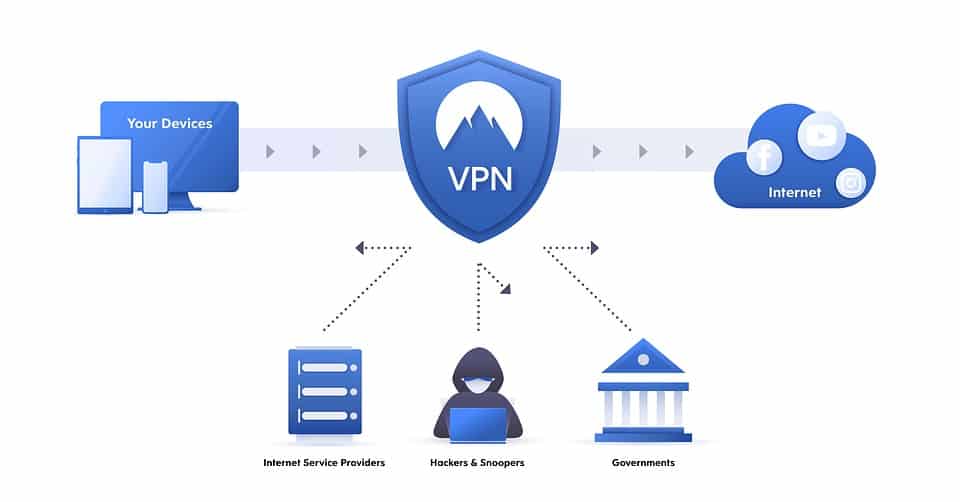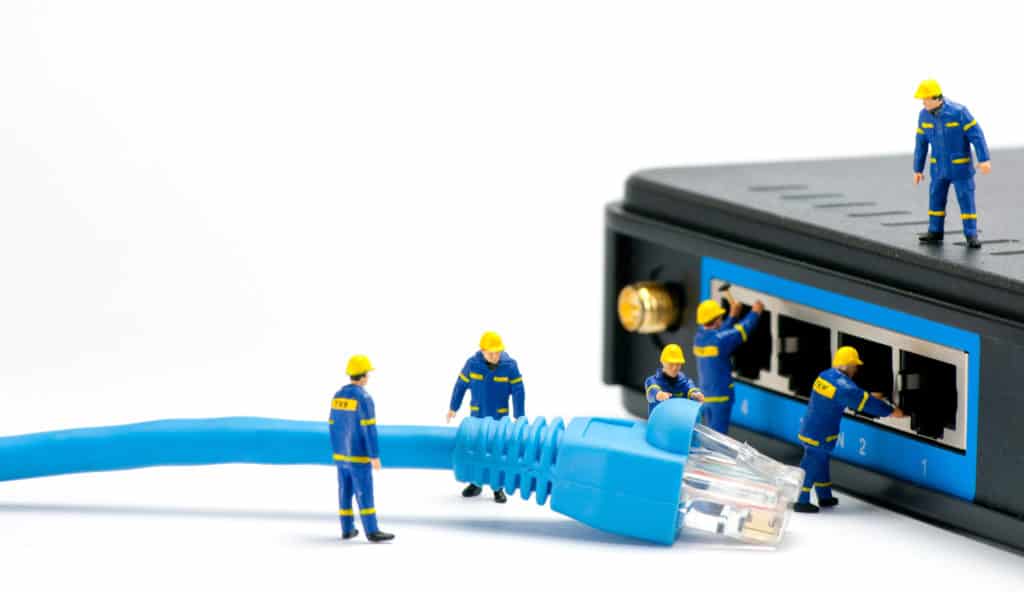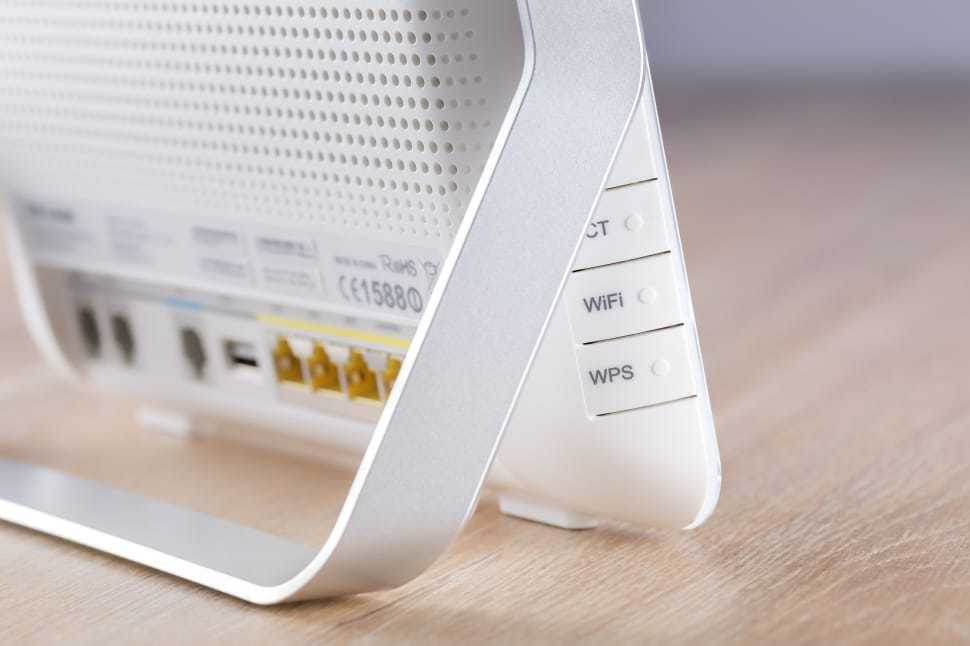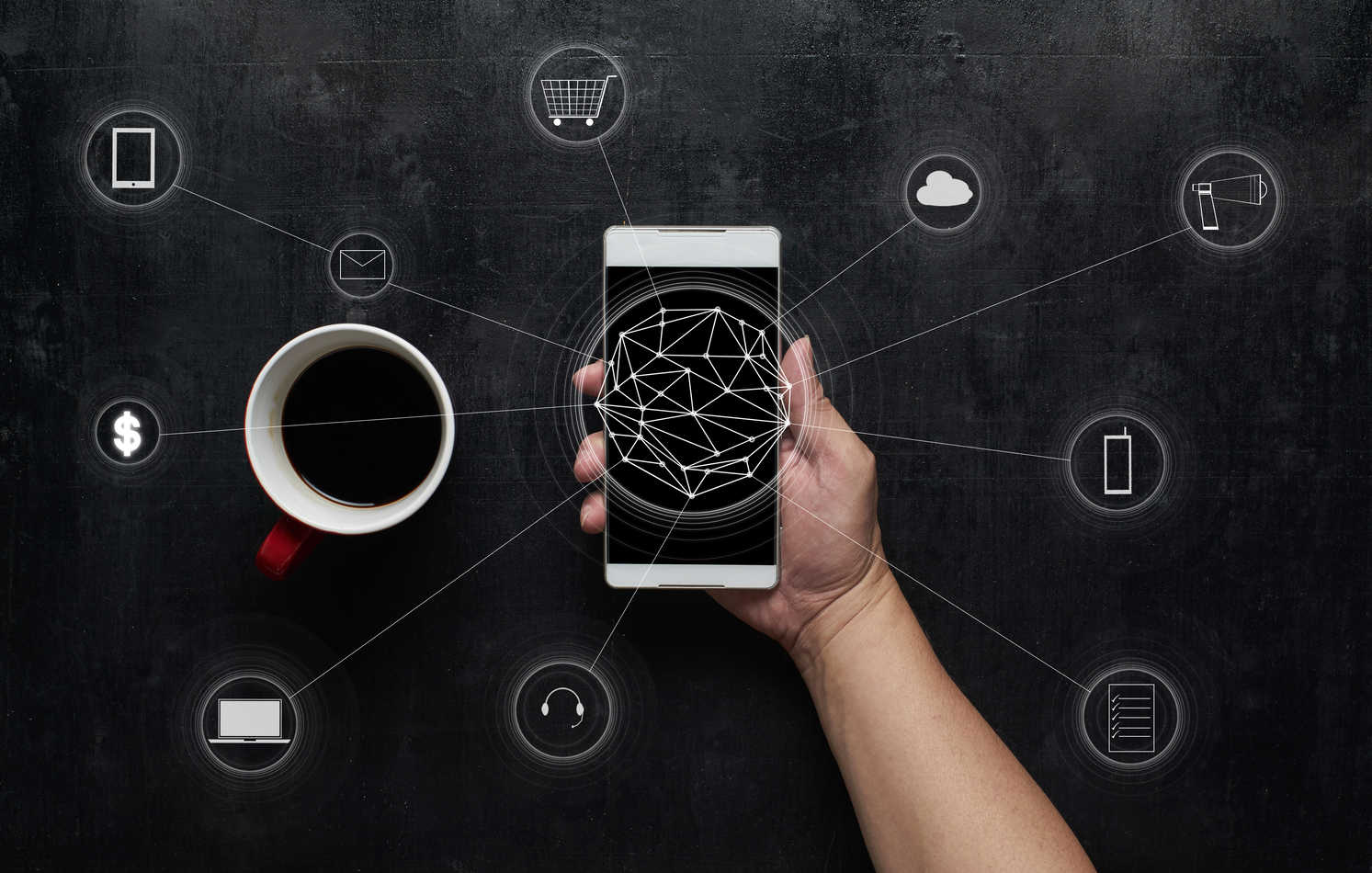Who is not aware of the term “VPN”, I bet this statement must have brought a smile on some of my reader’s faces. Well, coming back to the topic. VPN stands for Virtual Private Network. In the simplest of ways, VPN is a computer that is kept somewhere in the world to which your smart device connects to before it transmits data to your Wi-Fi router. Geez, this is the best I could come up with being simplistic.
With the continuous development being done in the field of IoT (Internet of Things), the smart home concept has really picked up its pace. Almost anything that has electricity passing through it could virtually be made to connect to the internet. And all of this forms the vast IoT network. And when it comes down to our homes, the smart devices that we use to automate our home functions are a great example of the IoT environment.
Quite frankly, the concept of having and using the internet has transitioned from an informational convenience into becoming a tool that is indispensable and controls almost anything we do in our daily lives. This drastic change in the approach took place somewhat around in the last decade or so. Smart homes could very quickly be said as the next industrial revolution and are the wave of the future!
For example, once you wake up every day in the morning; what is the first thing that you do? I know, I make coffee first. Even before getting into the shower. In a standard dumb home, you would need to go to the kitchen, fill your kettle with water, prepare the coffee and then consume it. But let us now take into account that you had a smart coffee maker at home. All you need to do is to set a schedule on your smart coffee maker at the very beginning, and then every day before you wake up! Your coffee would be ready, piping out. Just the way I like it! Let us take this to the next level. Since we assumed you already have a smart coffee maker, once the coffee is made; it would then send a notification to your smart alarm clock, and that’s when the alarm goes off. All this is what we call as the IoT, and we are all an integral part of making it work.
With more than 13 billion connected devices worldwide, and with almost 5 million of new devices being connected to the internet each day, the amount of data your new smart fridge, smart alarm, smart bulbs and in fact anything in the “smart” domain collects, is staggering and you would be amazed after finish reading this article as to what are the main threats behind connecting your smart devices to the internet.
Table of Contents
Let Me Take You Back To the Very Basics of What a Smart Home Is
A smart home is a home which is embedded and installed with loads of devices that allow us to mitigate the monotonous, mundane tasks that we are generally accustomed to carrying out manually, converting them into an automated script and gives us the freedom to do things that otherwise would not have been possible due to time restrictions.
All of these devices are capable of connecting to the internet and talk to each other in a way that allows us to operate them with one click of a button. Smart home gadgets not only automate things when you are present inside your home but also gives you the liberty to access and control your home when you are away, using the remote access feature.
It is becoming a common trend now for the homemakers, to buy houses that have the IoT-ready or Smart Home-Ready tag on them. Such houses If not predominantly equipped and furnished with the latest smart gadgets have got all the basics of deploying a smart home ready and built-in into them. These new properties are customarily equipped with smart lights, inbuilt-speakers, a smart thermostat and smart blinds; to say the least. Doing this greatly increases the value of the construction and thus increase the real-estate worth. The homemakers are always on the lookout for ways through which they could get appraised for their efforts. And the fact of the matter is, this indeed is true. The world is rapidly adapting the smart home concept, and if you are not a part of it now, later it might be too late! Believe it or not, smart homes are here to stay and if you keen to know more about why smart homes were created then do read my article on Why Smart Homes Were Created at SmartNutter.com
The smart home concept is also being adapted by older properties. For instance, when you walk out into your favourite electrical items store to pick up your new boiler, it is likely to have a function to connect itself to the internet. Other items such as replacing your fridge with a new one, or even replacing your coffee maker with a new one, there is a high possibility that these new gadgets would be able to connect themselves to the internet. All of this is part of the bigger picture, which falls under the umbrella name of “IoT”. Get ready people, “Jetsons” home is on its way!
What is a VPN?
A VPN is a software that helps you connect and control your home automation system both safely and securely. This piece of software is capable of encrypting the data that your devices are transmitting over the internet. It encrypts each and everything that your smart devices are transferring between them and the VPN server, thus letting your data remain unreadable to anyone who is a prying eye outside of your network. A VPN can also be configured to form a private connection that you can use to connect to your devices in the most secure way possible.
Once the private connection is setup, then you may quickly and seamlessly connect your devices to this VPN connection without bothering yourself or losing your sleep over if anyone else (presumably a “Hacker”) could gain access. This whole process is referred to as the “tunnelling”. A tunnel is a process in which the data gets transmitted between the smart home automation system and the server, thus encrypting it. The only decryptor for this tunnel is you as you possess the security keys to communicate with this private VPN connection. Studies claim that you can also stay safe from your ISP if you doubt that they violate their privacy policy and always sneak peek into your links.
When a secure VPN private connection is established in your smart home ecosystem, all of the devices that then get connected to this connection do not have access to the World Wide Web. This later eliminates the chance of any hacker connecting to your smart home network and possibly jeopardising it. But fret not, you can easily communicate with your devices using the VPN connection that you have established by the use of a VPN software.
A VPN eliminates the direct access feature that your smart devices provide to the hackers by issuing you with a virtual IP. Even if a hacker does get his hands on your virtual IP, there is no way that they would be able to break into your IoT environment. On the contrary, they would end up facing the intense and immersive security systems deployed by the VPN provider, whose sole job is to utilize the state of the art security tools to provide their users with the VPN connection that is both secure and strong enough to not let the hacker gain control over your own network.
Why Do Smart Homes Need a VPN?

The bitter truth is that the internet is not considered a safe place. When I say that, I do not mean that there aren’t any well-intentioned users out there, but the nasty truth is that out of all the internet users out there, there does exist a group of people (most commonly referred to as the hackers) in this space who are continuously on the lookout to get hold of your sensitive data to possibly exploit it to their benefits or even sell them in the black market of the internet. If you are less-tech savvy internet user, then this particular part of my article is primarily targeted to you. There is no shame into admitting that you are not a tech-savvy internet user. Heck, most of my readers are not tech-savvy and that is the reason you are reading this article. Quite unfortunately, the need for high-end agencies and even governments are now actively on the lookout to find out what people do on the internet, what the trends are, what are they searching for and a plethora of other things that they would want to keep their eyes on. This is all done to monitor the citizens and also keep track of what’s going on in their society.
As a result of this, I have listed below the possible security and privacy risks that come along with the use of the IoT devices that we have at our homes.
Security Risks
You may feel that I am trying to make you laugh by starting off with this particular topic, but what if I tell you that the hackers could break-in into your smart coffee maker machine. Why would a hacker want to break into one, you may ask? Well, if your coffee maker is connected to the same network on which the rest of your smart devices are; then the chances are that the smart device with the weakest link would be targeted to gain entry and then access all your devices over the network with the help of it. Then there is these number of reported cases where hackers gained access to the cars by exploiting the onboard computer systems. Similarly, there were other cases reported where the smart security systems people have deployed in their houses had been used to gain entry.
It is not a matter of size here. You may think why a hacker would want to access a device as small as a smart light bulb. The damages are far grave once you are not careful with these implementations. A hacker could use a reactively small device in your eyes, to gain access over the network irrespective of your home or office. And let me break the news, once the hacker gains access to your smart network; there is nothing that stops them from gaining access to your confidential information and even your online bank details. This all could be possible also if the hacker were able to gain entry using your smart doorbell as well. So do not consider the size of your smart gadget to weigh out the odds whether a hacker would or would not be interested. As long as your device is a smart one that connects to the internet, there is always a possibility of a hacker to invade your privacy.
Privacy Risks
As all the IoT devices extend to almost each and every aspect of our lives, it is very much possible that once the hacker gains access to our smart network; they can fetch our personal information and records. Once they have this information in their hands, they can then very quickly sell it for cash or sometimes even use that information for identity theft. What exactly is identity theft? The sensitive and private information that the hacker can get hold of from your devices includes anything from your names, mobile numbers, SSN numbers, telephone ID’s, passport details, date of birth, name of your grandchildren and other information that you couldn’t even imagine of. It is also very much possible to make out from the data stored and generated by the IoT devices and work out when people are in and out of their house, what they do while at home and also to an extend to know where do they go out to.
For us (people), a home is a sanctuary where we come and take rest, enjoy and walk about freely doing what we feel is right and makes us happy. But in an unsecured IoT network, this all is put at high risk if best practices to safeguard these assets are not followed. So instead of our concept of “Jetsons” home being a relaxation station, it gets converted into a mess and a massive nuisance.
Surveillance Risks
Losing your bank details to the hacker is one thing, but the damages are far grave, and I am here to tell you today what those are in the line of your own privacy. If you have a surveillance system in your house, both indoor and outdoor; then this can easily be used to watch what you are doing. No more privacy now I assume?
There had been several reported cases where hackers gained access through the baby monitoring smart cameras and hackers being able to watch what the children are doing in their bedrooms. What if I also tell you that camera you have just on top of your laptop screen is also capable of being hacked, and the person on the other end could be watching you right now. Hey! I am just saying. Not that it is literally happening right now.
All the smartphones, laptops, smart TV’s with cameras and potentially anything with a camera in it and has access to the internet; can be used to monitor what you are doing. Then there is always the possibility of having your smart home voice assistant’s end up being hacked. The microphone and the cameras embedded into these can easily be then used to hear the conversations that are taking place around the device and your home and also see what you are on about. This, in my opinion, is the scariest bit of my IoT home and I have done all there is possible to safeguard myself and my family’s privacy.
The Foolishness of Trust
The least of the concern of any smart homeowner is that their devices that they have invested in end up being the culprit to a hacker gaining access to their privacy. A smart homeowner puts a great deal of trust into the manufacturer of which they are buying the product. There is this one thing that states very clearly in terms of Conditions in any product that you buy, that the product manufacturer would collect anonymous data and send it back to their servers for further enhancements to the product and release updates and upgrades to the current model. All this is ok, but to what extent and what is it that the manufacturer uses this data for?
User data is a precious commodity in the eyes of big businesses and not one, but almost all the IoT manufacturers consider that the devices they produce are an easy way to gather this data. Plenty of these companies either then sell this data to the other companies for money, or even promote their own products or upsell your gadgets or services related and tailored according to your requirements. They all derive this by the data that is being sent to them using their devices that we use at our homes.
Is this all a shocker to you? Well, please pick up the product user guide and go through the fine prints of the terms and conditions page on it. You are already giving then manufacturer the consent to process data on your behalf and also use it at their accord. Obviously, there is a particular limitation to it, but you never know!
Therefore, if you do not take the necessary steps to protect your own devices, you are indeed; I am sorry to say, offering carte blanche to a lot of entities. Limited to not only the manufactures of the product but also possibly to the hackers who can compromise their device. What happens at the end is, your IoT infrastructure being hacked and your privacy and security at grave risk.
So the Question Is, Why Aren’t the Smart Devices Not Made Secure?
Not all smart devices are easily hackable. Almost all the high-end smart gadgets do have a built-in security system that makes it difficult for a hacker to gain access to it. Unless you are using a third-class password on it, that is easy to guess. Most of the smart surveillance systems that you buy from a reputable vendor do have built-in features both in the software and embedded on the platform, that makes the life of a hacker miserable. But I am not saying they too are not trackable. You would be shocked to know that the NEST baby monitoring cameras also were hacked!
There are several reasons why manufacturers do not pay close attention to making their smart devices secure. The biggest one is the cost factor. Initially, when the IoT enabled devices were being launched into the market, there was a hefty price tag attached to it. Most of the mainstream audience was hesitant about buying a smart device that costs 10x more than its dumb version. Gradually the manufacturers started slashing the prices on their smart products just so for the people to buy them at somewhat similar rates to a standard device. As a result, security features were jettisoned to keep the prices at a lower level.
Size also plays a significant role here in these smart devices. Since adding security features onto a smart bulb would require it to increase in size since the physical modules that are required to provide the necessary security occupy space, hence the reason. As a result, security is no longer seen as a priority to all the smart IoT devices manufacturers, and as a consequence, the consumer has to suffer.
How to Protect Your IoT Devices from Hackers
With the risks of connecting to the internet as high as ever and the IoT manufacturers laying a deaf ear on the security and privacy of their customers, the onus falls onto the consumer to ensure that they keep their infrastructure and themselves protected.
For users of laptops and smartphones, it is quite clear and an easy process to protect these assets. People are accustomed to investing in a robust software security solution and then going away with their lives. But similar is not the case in smart devices. Since smart devices lack the interface in which a standard security suite software could be installed, the user of these products is ordinarily clueless and knows nothing of how to secure and protect them.
The answer to this dilemma is relatively simple and straightforward. The best and the perhaps the only tool to keep yourself and your IoT devices safe and secure is a VPN. To protect your IoT infrastructure, you would need to install the VPN on your network since installing it on your smartphone or laptop only is not sufficient. I will go into more details on the topic down below where you would know how and why I derived to this conclusion.
The safest and fastest way of securing your IoT infrastructure is by deploying the VPN on your Wi-Fi router to which your IoT devices are communicating. What this would mean is that once your VPN is set up on your Wi-Fi router, all the devices that connect to it would then be routed through your external VPN server. Thus encrypting the communication. This gives the owner a great sense of comfortability, and you can, therefore easily rely on the fact that your network is secure from the prying eyes.
I have written a very detailed guide on how to protect your smart home from hackers on my blog here at SmartNutter.com. If you are keen to know what other best practices you should be following, then please head onto my article.
How to Choose Which VPN Is Best For Your Smart Home

There is no hard and fast rule, and I wouldn’t be going on about suggesting to you which VPN you should go for. If you are keen to know which one is best, then please let me know down in the comments section below, and I would be more than glad to write an article on the ones that I had tested and worked well for me.
When you are choosing which VPN is best for you, it is best advised to follow the below guidelines and always ensure they fall in the below criteria’s.
Compatibility of your existing router
When you are conducting your research as to which VPN you should buy. Then you need to know that it is the physical hardware that you are about to buy. So keep in mind that the VPN service that you buy is directly compatible with your current Wi-Fi Router.
It is vital to do this groundwork first and find out which VPN device your router supports. And once you have isolated that, it’s now time to hop onto Amazon and finding that particular VPN adapter. And then just buy it off!
Industrial Encryption and the Security
Always ensure that VPN provider you use has the industry’s strongest encryption available. Let me be upfront here, the cost of buying a VPN could vary anywhere in between $10 to 30$ per month. It is best advised to go for the most expensive ones since they have dedicated customer support and also provide you with step-by-step instructions to configure the VPN on your particular router. Aim for 256 Encryption protocols to be present in the VPN service you are about to signup. Just a heads up!
Exercised Privacy Policies
The whole point of investing in a VPN is to ensure that your IoT environment is leak-free. When I say leak-free, it means that no hacker would be able to gain access to your data. But if your VPN service provider is not agile into exercising their privacy policies that they have incorporated into their service, then you very well can conclude that your information is bound to leak out through them. Therefore when you are doing your due diligence on the VPN providers, ensure that you read through their Privacy Policy and see if it suits you.
No Latency Issues
It is a universally known fact that once you have a VPN connection enabled; the speed of your internet takes a hit. But this can be easily countered if you invest in a half-decent VPN service provider. After all, the more you pay; the better. This rule is adequately applied to the VPN service provider’s category. You wouldn’t want to go for a VPN provider who is offering you the service at, let’s assume $5 a month and once you have everything set up on your router; you end up facing high latencies and slower speeds because all your network devices are hogging up the traffic.
No Restrictions on the Usage
Stay FAR-FAR away from using FREE VPN services for your IoT network. PLEASE!
Some VPN services, especially FREE ones, can do anything they deem with your IoT data. They also enforce certain restrictions such as allowing you a limited amount of traffic before you need to go on and invest in the more ill-priced subscription charges.
Static IP option in the VPN service
Always aim to subscribe to a VPN service that has the opportunity to allocate a static IP for you. What it does it that you are assigned with “one” IP for all your VPN connectivity. This IP belongs solely to you, and no one else has access to this address.
How to know if your Wi-Fi router is VPN enabled?

It is a simple and easy step. Even my 6-year could do it in no time.
Get hold of the smart device that you are connected to and navigate to its settings. Find out what is the IP address of the router.
Using the router IP, log in into your router and find if you can see the words “VPN” or “VIRTUAL PRIVATE NETWORK”. If you see this available on the settings page of your Wi-Fi router, then you are golden and do not need to go about investing in a new Wi-Fi router to set up the VPN.
How Can I Set Up My Wi-Fi Router To Use The VPN Service
Every VPN service provider has different ways through which you can set up the VPN connection on your particular router. And so is the case with each Wi-Fi router manufacturer. There is no one single instruction page that fits all here. Any service provider you choose for the VPN connection should be able to guide you the steps that are required to set up a VPN connection on your particular model of the Wi-Fi router.
I have outlined the steps below how you can set up a VPN connection on a Wi-Fi router. So you could have a clear idea as to how long does it take and how simple it is.
After ensuring that your Wi-Fi router can have a VPN connection is set up on it. Read through the rest of the instructions now. If you are not sure how to access your router to see if the VPN feature is embedded into the firmware or not, I suggest getting help from your IT cousin who always boasts about his supremacy in the field of technology. *cough
Anyhow!
- First of all, ensure that you chose the best VPN service, provider
- Signup using their checkout page. And get hold of the details that the VPN service provider has given you viz. your subscription
- You will need to look for more information such as “PPTP and L2TP-IPSec Protocols” that your service provider has given you and keep a note on these.
- Get onto your computer or your laptop.
- Log-in into your Wi-Fi router using the IP address of the router.
- Seek out the option that is labelled as “VPN” or “VIRTUAL PRIVATE NETWORK.”
- Open the VPN page and key in all the details that you had received from your VPN subscription.
- Click APPLY. And press SAVE.
- Exit
Once you have followed the necessary steps above to set up your VPN on your Wi-Fi router, wait for a few minutes. Once the VPN is set up, more advanced routers would have a LED light up on the router panel confirming that the VPN is setup. So now any device that gets connected to this router has its data encrypted and secure. Voila!
Conclusion
Remember people, VPN is not a bullet-proof solution. There are other risks too that are involved in any IoT environment. But at least having a VPN ensures you that your data is encrypted and secure and gives you the peace of mind that your IoT setup cannot be hacked. Having a VPN encrypt your data allows no backtracking to take place. So no physical location identification would then be possible since your data communication in-between your smart devices are being routed through a VPN server which could possibly be kept in any part of the world.
I hope you liked the article above and would share it with your peers and friends. Thank you for reading!
Thank you!



